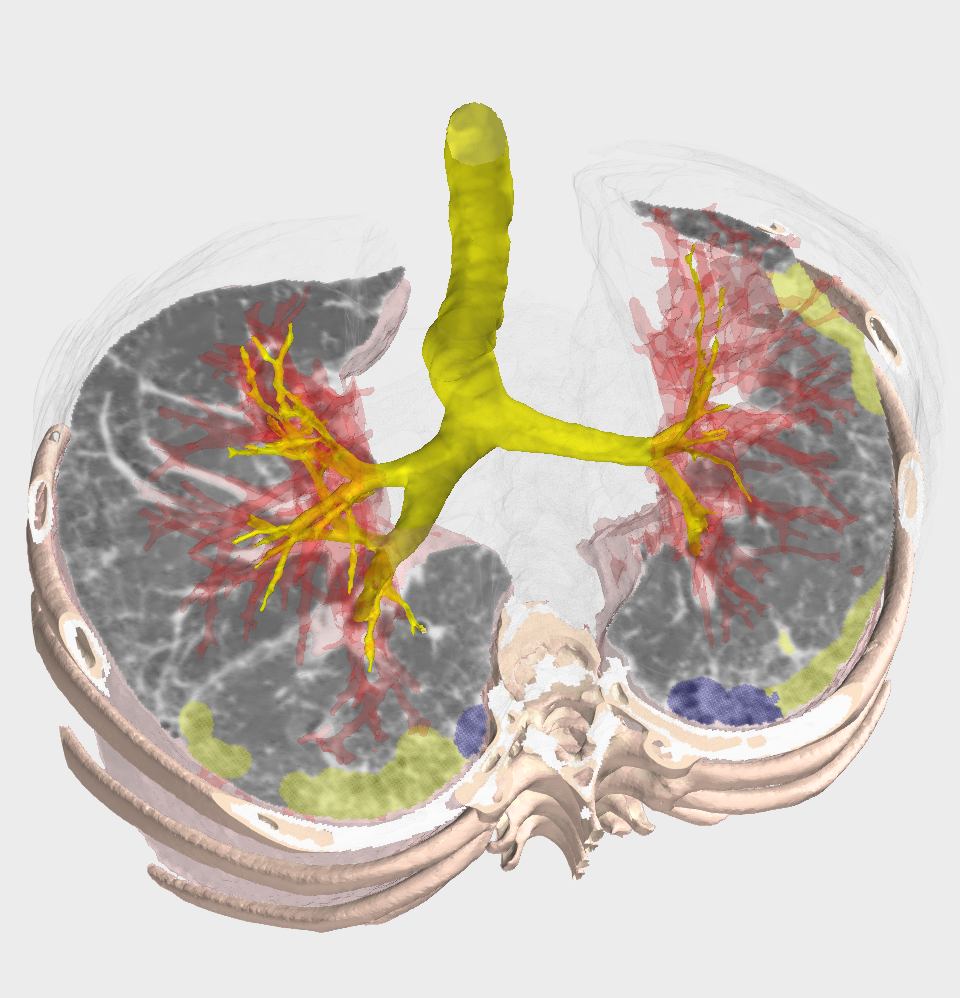
Brainomix will be presenting new data at the upcoming European Respiratory Society (ERS) International Congress in Barcelona that showcases the value of its new e-ILD platform, centered around a novel, AI-powered imaging biomarker that has demonstrated superior prognostic value compared with traditional measures.
Following a $21.2M Series B fundraising round in December 2021, the company announced it was expanding its portfolio and leveraging its expertise in AI to develop innovative solutions for solid tumor cancer and lung fibrosis.
The e-ILD platform is an AI-powered image processing module that can quantify thoracic CT biomarkers of patients with interstitial lung disease (ILD) – including idiopathic pulmonary fibrosis (IPF), a condition marked by a relentless decline in lung function, but with a variable disease trajectory.
The currently accepted endpoint for IPF clinical trials is forced vital capacity (FVC), despite being widely acknowledged as unreliable, variable and imprecise – something Brainomix aims to address with its e-ILD platform, a tool that standardizes the quantification of lung fibrosis on HRCT scans to more accurately identify Progressive Fibrosis (PF) patients.
Instrumental to the development of this innovative solution was the close collaboration between Brainomix and OSIC, the Open Source Imaging Consortium, of which it is a Founding Member. OSIC – a global, 501(c3), not-for-profit cooperative effort between academia, industry and patient advocacy groups – focuses on enabling rapid, open source advances in the fight against idiopathic pulmonary fibrosis (IPF), fibrosing ILDs, and other respiratory diseases including emphysematous conditions. Its extensive dataset of anonymized scans and accompanying clinical information, the largest and most diverse of its kind in the world, enabled the Brainomix R&D team to refine and validate e-ILD over the course of its development.
“OSIC brings together a unique constellation of expertise from healthcare, academia and industry, enabling not only the creation of a unique dataset, but also the sharing of knowledge and know-how,” acknowledged Dr George Harston, Chief Medical & Innovative Officer at Brainomix. “OSIC provides the multidisciplinary consortium to understand the data and how to best use it to create new tools and technologies in the fight against ILD.”
Dr Peter George, Medical Director at Brainomix and Clinical Lead for ILD at Royal Brompton Hospital in London, will be presenting data at ERS on Tuesday, 6th September in the TP-23 poster area from 8:30 – 9:30am (more details here) stemming from a study that was run using an OSIC dataset of CT scans and lung function tests from 278 IPF patients.
The results highlight the unique value of the imaging biomarker at the core of e-ILD, the weighted reticulovascular (WRV) score, which quantifies the extent of the lung affected by reticulovascular abnormalities. The novel biomarker was shown to have twice the predictive power of forced vital capacity (FVC) for transplant free survival, while also predicting subsequent decline in FVC far better than FVC itself.
“These initial results of our e-ILD platform are very promising, demonstrating that our biomarkers can identify patients whose disease is progressing with stable lung function, addressing the challenge of FVC variability,” noted Dr George. “We believe that embedding our platform into future IPF trials with composite endpoints would allow enrichment for patients more likely to progress, resulting in shorter clinical trials with fewer recruits needed to identify therapeutic benefit.”
Elizabeth Estes, Executive Director for the Open Source Imaging Consortium (OSIC) commented: “We are pleased to see these encouraging data and developments from Brainomix as they highlight the important value of our consortium in enabling the development of novel solutions to combat Pulmonary Fibrosis.”















